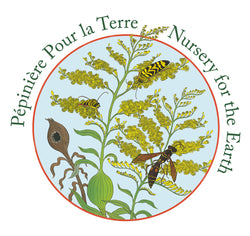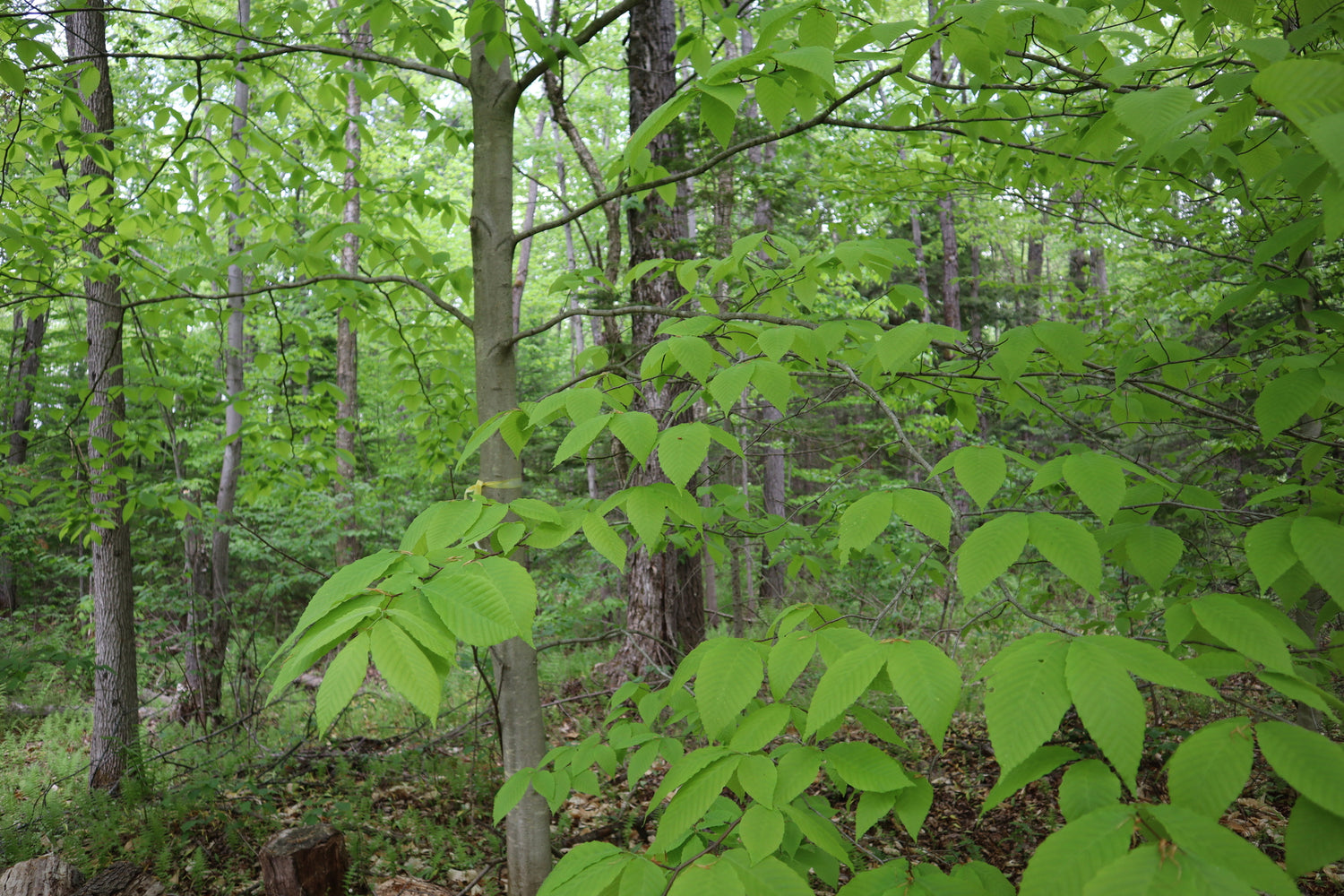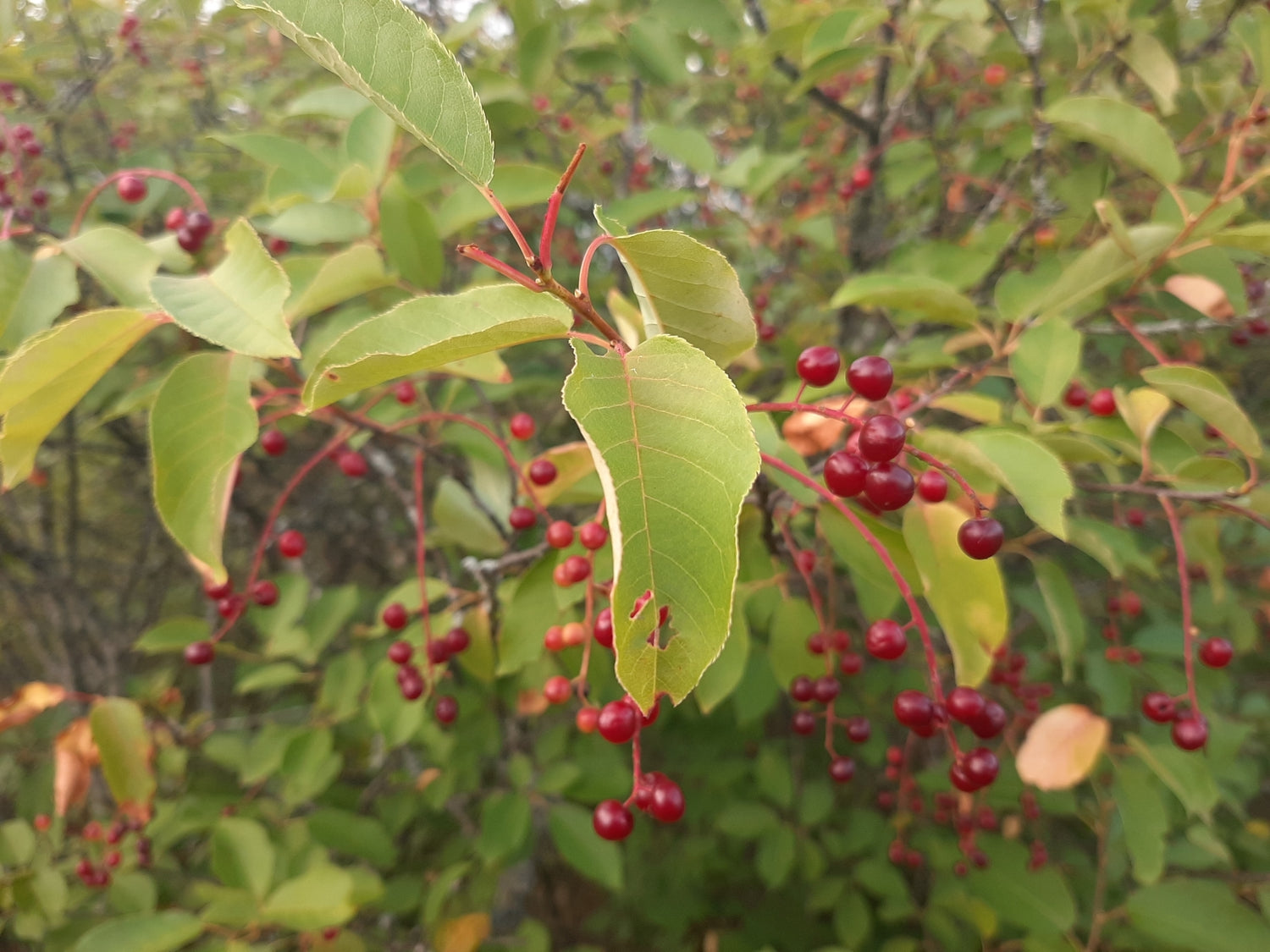Nursery for the Earth
Viburnum cassanoides (Fr: viorne cassinoïde | En: wild raisin)
Couldn't load pickup availability
Wild Raisin
Viburnum cassinoides
Alternative names: Witherod, Swamp Haw
French: Viorne cassinoïde, Alises, Bleuets sains, Bourdaine
Wild Raisin is a large, adaptable deciduous shrub known for its creamy white flower clusters in early summer and its blue-black fruits that persist through fall and into winter. These berries, which resemble raisins when dried, provide valuable food for overwintering birds and are also edible for humans, either raw when ripe or cooked into preserves.
It closely resembles Nannyberry (Viburnum lentago), a related species that tends to prefer drier, upland habitats, while Wild Raisin is more frequently found in wetlands, forest edges, and along streams and rivers.
This species thrives in full sun to part shade and prefers consistently moist, well-drained soils, though it is tolerant of a range of conditions, including loam, sand, and clay. Its neutral to acidic soil preference, tolerance of varying moisture, and wildlife benefits make it an excellent choice for naturalized gardens, wetland buffers, or forest edge plantings.
Height: 3 to 6 m
Spread: 1.5 to 3 m
Bloom time: Late spring to early summer
Light: Full sun to part shade
Moisture: Prefers moist but adaptable to dry
Soil: Neutral to acidic; loam, sand, or clay
Habitat: Forests, wetlands, streambanks
Ecological benefits: Berries for birds and wildlife
Edible: Berries edible (ripe or cooked)
Share













